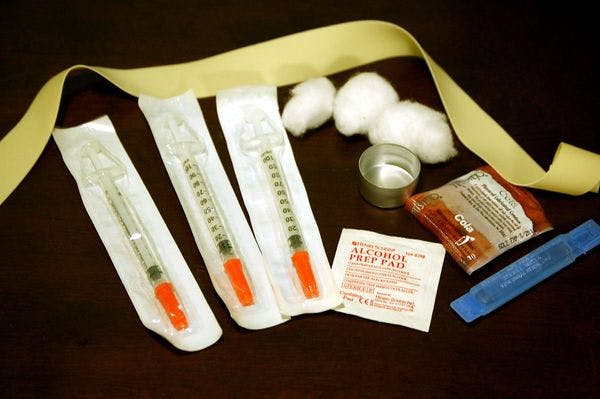Wikipedia - Todd Huffman - CC BY 2.0
The time to end the war on drugs is long overdue
It is 50 years since the June 18, 1971 address by US President Richard Nixon that publicised the US administration’s war on drugs. Nixon declared that drug abuse was “America’s public enemy number one”. Despite Nixon mentioning “rehabilitation, research, and education” in his speech, the war on drugs has been an offensive, with military interventions, soaring arrest rates, and aggressive sentencing. The USA has borne a huge cost, both financially and socially, with those most marginalised and vulnerable shouldering the largest burden. Five decades in, and despite multiple administration changes, no sign of victory can be seen. Drug use flourishes, with 13·0% (35·8 million) of Americans aged 12 years or older in 2019 reporting they had used an illicit drug in the preceding month, as revealed by the National Survey on Drug Use and Health. The same year saw 70 630 deaths due to drug overdose, with 49860 involving opioids (of which 14139 were due to prescription opioids).
Although HIV was unknown at the time of Nixon’s speech, the fate of the war on drugs and the HIV epidemic are intertwined. 186500 of the 1·2 million people with HIV in the USA are believed to have acquired the virus through injection drug use. Despite the USA seeing an overall fall in HIV diagnoses over the past 5 years, infections due to injection drug use are on the rise. If the ambitious target of ending HIV in the USA by 2030 is to be reached the needs of injection drug users will be a key part of the strategy.
The effects of the war on drugs are not confined to the USA, and injection drug users face stigma and criminal isation worldwide. Globally, around one in eight people who inject drugs are living with HIV, and injection drug users are 29 times more likely than nonusers to acquire HIV. In 2019, as shown in the new UNAIDS report Global Commitments, Local Action, 10% of new infections worldwide were in those who inject drugs. Many of these infections could have been prevented if the war on drugs had not contributed to an environment hostile (both politically and socially) to injection drug users. Some regions are hit harder than others: in eastern and central Asia 48% of new HIV infections are linked to injection drug use.
Downloads
Regions
Related Profiles
- UNAIDS
